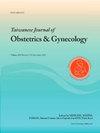胎儿脑室肿大的遗传见解和临床结果:回顾性分析
IF 2.2
4区 医学
Q2 OBSTETRICS & GYNECOLOGY
引用次数: 0
摘要
目的胎儿心室肿大(VM)是一种常见的超声发现,对妊娠结局有潜在的影响。关于胎儿VM遗传异常患病率的研究很少。我们的目的是探讨染色体和单基因异常的风险和评估胎儿VM的结局。材料与方法对211例胎儿VM妊娠的资料进行分析。使用核型和/或CMA/CNV-Seq评估染色体异常,并通过全外显子组测序(WES)检测初始结果阴性的单基因变异。妊娠结局也进行了评估。结果VM检测时平均胎龄27.0周。在13.3%的病例中检测到染色体异常,在排除多态性和VUS CNVs后,精确阳性率为9.0%。106例分离VM病例的亚组分析显示,单侧VM和双侧VM、轻度VM和中度VM之间的染色体异常无显著差异。此外,55名胎儿接受了WES检查,20%的病例显示出致病或可能致病的变异。非分离VM病例单基因异常发生率显著高于对照组(P = 0.01)。妊娠结局表明,孤立性VM病例的正常发育率(89.2%)高于非孤立性VM病例(58.6%),后者也有较高的引产、死产和新生儿死亡率。123例无染色体异常胎儿的超声随访显示,轻度VM主要消退或保持稳定,而重度VM的进展率明显高于中度VM。结论本研究强调了鉴别分离性和非分离性VM在产前诊断中的重要性。严重的VM与较高的进展率相关,而WES为单基因异常提供了有价值的见解,特别是在非孤立病例中。这些发现强调需要全面的产前评估,以更好地告知临床决策和预测妊娠结局。本文章由计算机程序翻译,如有差异,请以英文原文为准。
Genetic insights and clinical outcomes in fetal ventriculomegaly: A retrospective analysis
Objective
Fetal ventriculomegaly (VM) is a common ultrasound finding with potential implications for pregnancy outcomes. There are few studies on the prevalence of genetic abnormalities in fetal VM. We aim to investigate the chromosomal and monogenic abnormalities risk and evaluate outcomes of fetal VM.
Materials and methods
We analyzed data from 211 pregnancies with fetal VM. Chromosomal abnormalities were assessed using karyotyping and/or CMA/CNV-Seq, and monogenic variations were detected through whole exome sequencing (WES) in cases with negative initial results. Pregnancy outcomes were also evaluated.
Results
The mean gestational age at VM detection was 27.0 weeks. Chromosomal abnormalities were detected in 13.3 % of cases overall, with a refined positive rate of 9.0 % after excluding polymorphisms and VUS CNVs. Subgroup analysis of 106 isolated VM cases revealed no significant differences in chromosomal abnormalities between unilateral and bilateral VM or between mild and moderate VM. Futhermore, 55 fetuses underwent WES, revealing pathogenic or likely pathogenic variants in 20 % of cases. Non-isolated VM cases showed a significantly higher rate of monogenic abnormalities (P = 0.01). Pregnancy outcomes indicated that isolated VM cases had a higher rate of normal development (89.2 %) compared to non-isolated cases (58.6 %), which also had higher rates of induced labor, stillbirths, and neonatal deaths. Ultrasound follow-up of 123 fetuses without chromosomal abnormalities showed that mild VM predominantly resolved or remained stable, while severe VM had a significantly higher progression rate compared to moderate VM.
Conclusion
The study highlights the importance of distinguishing between isolated and non-isolated VM in prenatal diagnostics. Severe VM is associated with higher progression rates, while WES provides valuable insights into monogenic abnormalities, particularly in non-isolated cases. These findings underscore the need for comprehensive prenatal evaluation to better inform clinical decision-making and predict pregnancy outcomes.
求助全文
通过发布文献求助,成功后即可免费获取论文全文。
去求助
来源期刊

Taiwanese Journal of Obstetrics & Gynecology
OBSTETRICS & GYNECOLOGY-
CiteScore
3.60
自引率
23.80%
发文量
207
审稿时长
4-8 weeks
期刊介绍:
Taiwanese Journal of Obstetrics and Gynecology is a peer-reviewed journal and open access publishing editorials, reviews, original articles, short communications, case reports, research letters, correspondence and letters to the editor in the field of obstetrics and gynecology.
The aims of the journal are to:
1.Publish cutting-edge, innovative and topical research that addresses screening, diagnosis, management and care in women''s health
2.Deliver evidence-based information
3.Promote the sharing of clinical experience
4.Address women-related health promotion
The journal provides comprehensive coverage of topics in obstetrics & gynecology and women''s health including maternal-fetal medicine, reproductive endocrinology/infertility, and gynecologic oncology. Taiwan Association of Obstetrics and Gynecology.
 求助内容:
求助内容: 应助结果提醒方式:
应助结果提醒方式:


